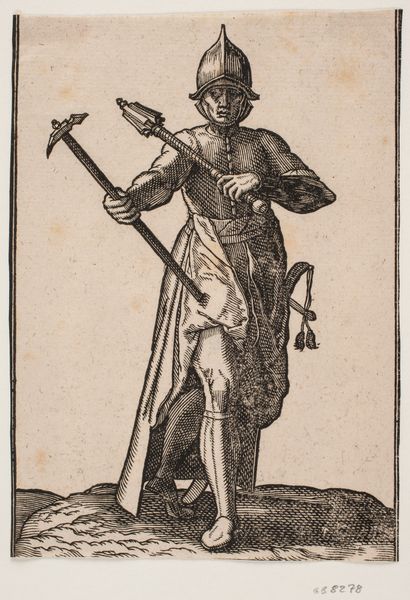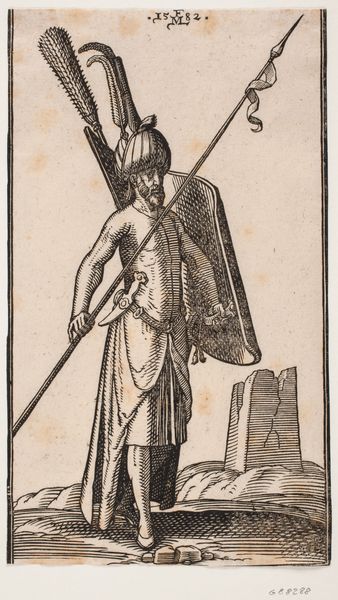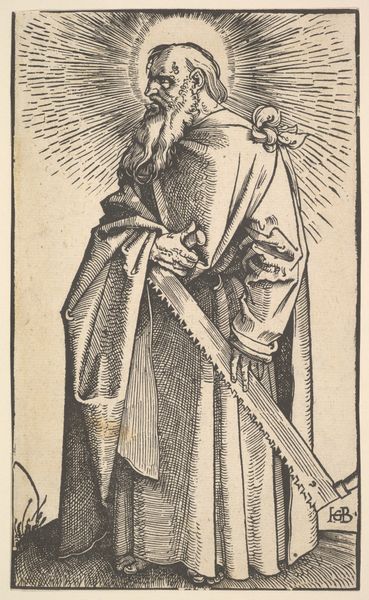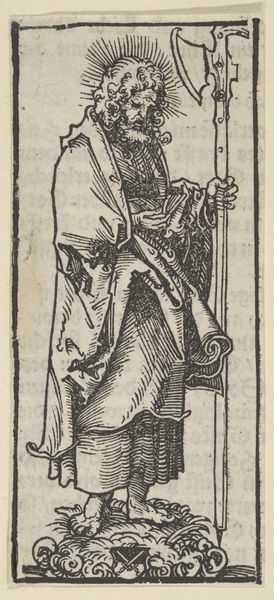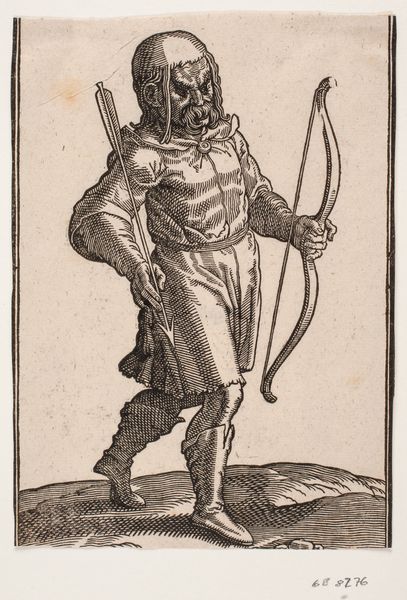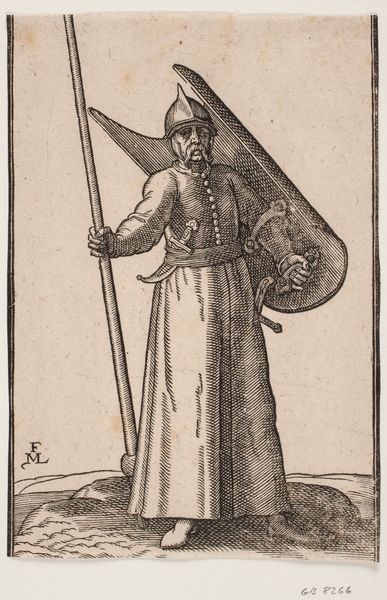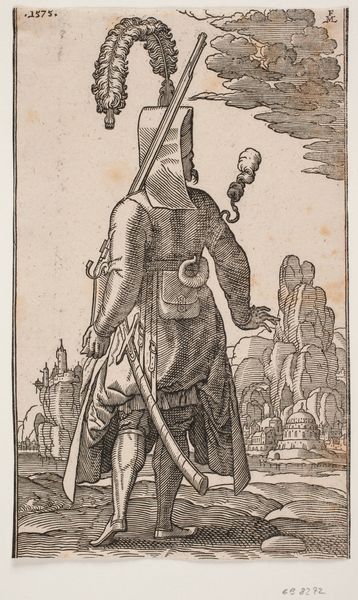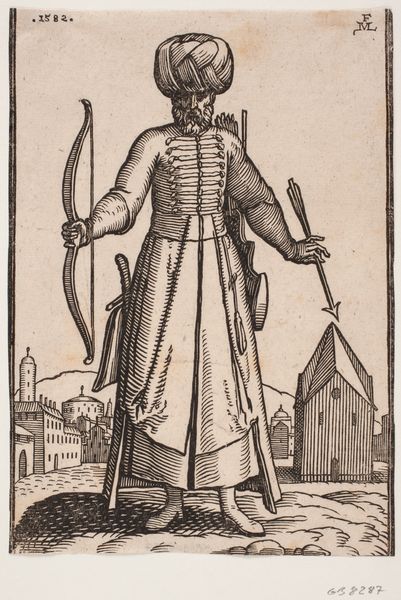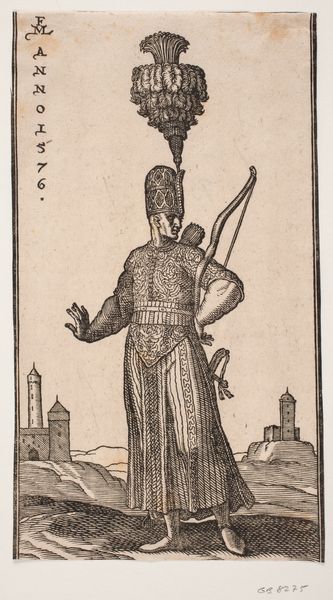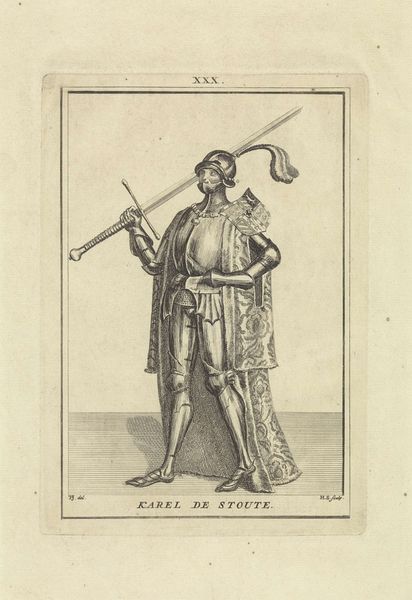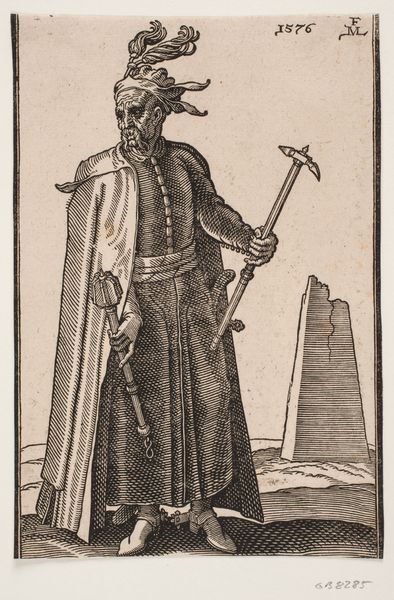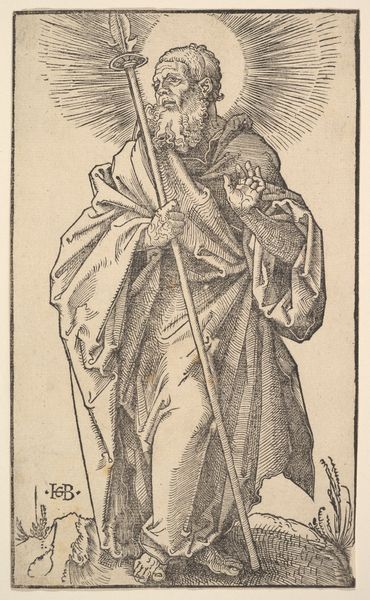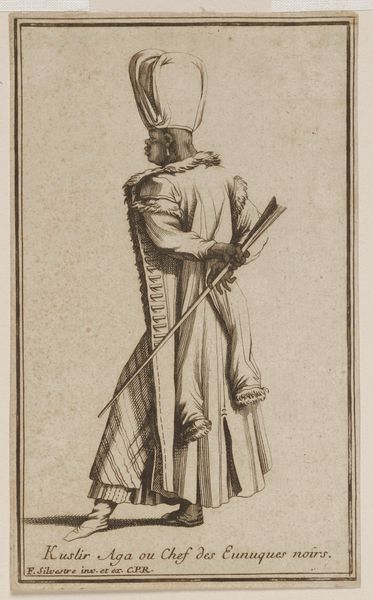
Stående soldat (akinci), profil mod h.; i h. hånd en stridskølle, i v. hånd en lanse, hvis top er uden for øvre indramningslinje; på v. arm et skjold med indersiden vendt opad, ved v. side et sværd 1576
0:00
0:00
drawing, print, ink, woodcut
#
drawing
# print
#
figuration
#
11_renaissance
#
ink
#
woodcut
#
northern-renaissance
Dimensions: 194 mm (height) x 135 mm (width) (bladmaal)
Curator: The unwavering gaze of this figure is striking, isn't it? I see a kind of stark determination in the way he's rendered. Editor: Indeed. We're looking at "Staaende soldat (akinci), profil mod h.; i h. haand en stridskoelle, i v. haand en lanse, hvis top er uden for ovre indramningslinje; paa v. arm et skjold med indersiden vendt opad, ved v. side et svaerd," or "Standing Soldier" created in 1576 by Melchior Lorck. This particular rendition utilizes ink and woodcut. Look at the quality and texture of that print, particularly the rendering of clothing, really remarkable! Consider the labour behind that! Curator: Precisely. Note how the density of lines dictates tone. It's fascinating to consider how Lorck used simple techniques, really labour-intensive techniques I might add, to communicate volume, depth and texture. The woodcut method lends a graphic quality, wouldn’t you say? Editor: Absolutely. It creates such graphic distinction. What I am captivated by, however, is the construction of the composition. The strategic placement of the lance extending beyond the frame, juxtaposed with his assertive posture. I wonder how the strategic angles formed by the figure itself work here. Curator: His direct stare confronts us and immediately signals purpose, command, duty... what does that say about the production, and subsequent distribution of images for martial aims in the 16th century? Perhaps for purposes of recruitment or propaganda? This image, viewed in its proper historical context, illustrates more than mere visual form. Editor: That brings us to the material considerations and socioeconomic status linked with the production and eventual distribution. The choices related to subject and media would affect cost, visibility and overall impact... So we see a negotiation in that process too, don’t we? Curator: Without a doubt. It pushes us to think about how the art of war intermingled with art-making at that point. We tend to overlook the hands and workshops necessary for art of any scale, like these single images or perhaps vast building projects! Editor: Right, so paying attention to these kinds of Renaissance materials pushes us beyond merely considering the piece aesthetically. By observing both composition and resources of production we unlock so much insight, and are really beginning to uncover a story! Curator: Well said. I find myself seeing new qualities that are more striking now after our chat. Editor: I agree. These small details now echo loudly in this fascinating piece by Lorck.
Comments
No comments
Be the first to comment and join the conversation on the ultimate creative platform.
